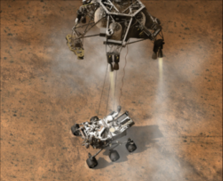
Odds are that you know someone who’s had a heart attack. If you’re like me, you know many. One American suffers a coronary event every 25 seconds and about every minute someone dies from one.
Doctors thought they understood artery-hardening diseases that lead to heart attacks, strokes and death. But these theories have been contradicted by new research performed at the University of California, Berkeley. According to a new study published in Nature Communications, a previously unknown type of stem cell is actually the underlying cause for clogged arteries.
Researchers analyzed cells from blood vessels of transgenic mice and humans. They were able to trace the lineage of the cells that rapidly reproduced to cause a build up of fibrous scar tissue in the vessel walls. Current theories predicted these would be smooth muscle cells but instead they were a newly discovered type of stem cell.
Specifically they determined that the culprit behind clogged arteries are multipotent vascular stem cells that can develop into various specialized cells – smooth muscle, nerve, cartilage, bone and fat cells. This explains how arteries can calcify and harden, since the stem cells can form bone and cartilage.
If this research is verified in animals and humans by other research groups, this could lead to new therapies.
For more information about this research, check out my KQED Quest blog.
